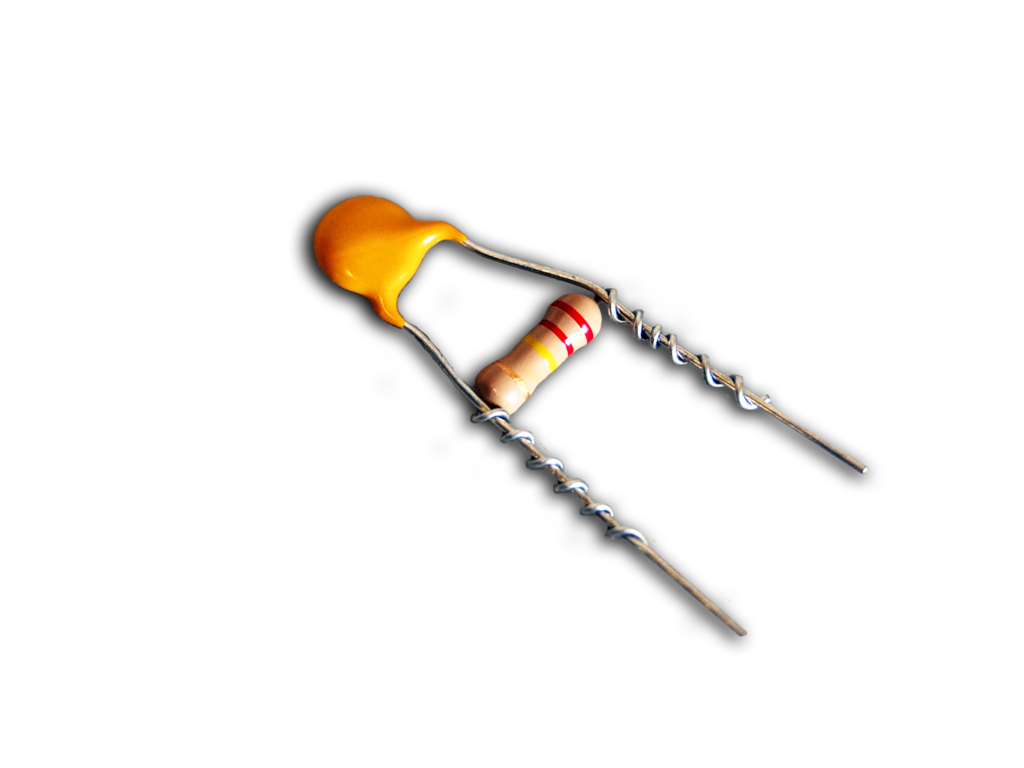Secrets About Your Guitar’s Volume Control
So you have bought an electric guitar which has a useful looking control on it saying “Volume”. Sounds simple right? Well in practice it is not that straight forward! There is a reason most people rarely use it for anything more than on /off switch. In the next few minutes you will be walking away a better guitarist because I am going to give you a more detail on what the volume control actually does. We’ll cover some technical issues faced, and some creative uses of the control that you can take away and experiment with. Enjoy!

The Sound (signal) Chain
The first thing we always want to consider with controlling the sound via any dials and knobs on any equipment is the signal chain. So what do I mean by the chain? Electronically the sound starts at the pickup though a process of magnetic induction (A change in the magnetic field cause by the vibrating metallic string over the pickup’s magnets creating a signal out of the pickup). From this the signal most commonly passes in a linear way through:
- The guitar’s electronics,
- Then through the guitar lead
- Often through any effects pedals you are using
- Into the amplifier
- If performing live then often into the desk and house speakers
As your signal passes through this line (or chain) there are many different things that can affect its volume. Any form of gain/distortion pedal, compressors, EQs and boosts are directly designed to affect the signal strength in some form. On top of that other pedals, amplifiers and desks may have volume, gain or level settings on them.
What does all this mean in terms of the guitar’s volume control? Simply put it will change the signal coming out of the guitar but this will not necessarily translate to volume out the other end. There are too many other elements also changing the sound along the way for this to consistently be the case. So the only way to change purely your volume is the master output at the end of the chain. This might be your amplifier or the mixing desk in a live venue. But knowing what affect a difference in the guitar’s signal makes in the chain will give you a good idea of what change to expect. Read on!
The Volume pot changes the tone
Yes you did read that correctly! And yes this does sound backwards but let me explain. The volume pot* cuts out more and more of the frequency range passing through it the further you roll-off the volume. This is very easy to test for yourself to see practically how much of an affect it has. All you need to do is play a bit on full volume on the guitar to hear the tone. Then turn your guitar’s volume down most of the way and turn the amp’s volume up to counter this. Now the overall volume you hear will be roughly the same but the tonal range and quality will be vastly different.
Why does it do this? A potentiometer is the electrical component that changes the guitar’s volume through varying its resistance. So the more you turn the volume down, the more resistance is applied to the signal. But this resistance does not affect the entire frequency range equally and the higher frequencies are lost first. The audible affect of this is a full bright tone turns muddy and flat with the greater resistance.
Solution in mods
There are some good modifications for your electronics that can help remedy this problem. The best example is the Fralin Volume Kit which lets the treble “bleed” or pass through the potentiometer. It is a capacitor and resistor wired in parallel and soldered onto the lugs of the pot inside the guitar. This lets you roll-off your volume with far less affect on the tone of your guitar. And at $5 they are far from expensive! The only drawback is not every guitarist has the experience to take their instrument apart and start soldering bits in.
If you are going to this effort I would advise it as an opportunity to also upgrade the pot if the original one is not top quality. Because even the top ones are quite inexpensive, this can make a noticeable but affordable difference. Maybe add more capability and control with a Push/Pull or Push / Push pot? Again Fralin has an amazing page on mods covering this that is guaranteed to inspire!
What can the Volume pot be used for?
So far this all seems quite negative but the volume control is far from useless! There are several different techniques and sounds that rely on using the volume pot. It is because of these techniques that you will almost always find the volume in reach near your right hand and the tone control is further away.
1. As a gain/dirtortion control
As your distortion from pedals or on the amp relies on the level of signal coming into the unit you can control this from the guitar’s volume. How do you do this? Setup here is key! So tweak the distortion so that there is just enough for the full sound you are after and no more. Then by rolling off your volume you will dip the signal under what is needed for this distortion. You can see this in the sound wave below. In the middle of the clip the volume is rolled on and the signal is clipped introducing the distortion. This technique lets you control your sound from either a clean or a gentle crunch all the way up to your full distorted sound.
When would you use this? Often in order to build up to a powerful sound through a verse if you just step on your distortion pedal there is too drastic a change. However, by using this technique you can gradually introduce a heavier sound as you want it. Very useful!
The irony here is that when you have dropped your signal level to just under the clipping point you do not lose any volume… Back to the title, the volume is a signal control that adds resistance to the signal. But many uses for this does not result in or intend for a difference in volume.
I have personally used this on stage often but it does have it’s drawbacks and difficulties.
- It is very guitar dependent so you will want a good quality potentiometer. Different potentiometers graph differently in terms of their graduating levels of resistance. Some are easier to control than others.
- Also technically you cannot always multitask and control the knob while playing if the song is demanding on the right hand. Sometime this can be managed with more hammers and pull-offs thus delegating work to the left hand, sometimes not. So play around and see where you can get this technique to work!

2. Synth like swells
A guitar’s notes are attenuating by nature. When a note is initially played it is at its loudest and from then its volume decrease. This is the same with all plucked and hammered instruments. On the other hand bowed or wind instruments and also the voice have the ability to gain volume throughout a note.
Our sound wave below shows how the initial attack dies away quite rapidly before the more sustained resonance of the guitar starts to level out the signal more.

By using the volume control on an electric guitar you are able to slowly introduce the note without the initial attack. Start by playing the note with the volume off. Then just after playing the note role the volume on. Depending on your guitar and where it’s pot is, usually this is easiest to do using your little or ring finger. This can give the note a synth like sound and broadens your arsenal as a musician. You can see an example towards the end of the video here by Cole Rolland.

3. On / Off Switch
This point seems obvious but I would like to highlight the importance here that might not initially be apparent. One of the major mistakes many guitarists make on stage is to know when their guitar should be making a sound and when it should not! If you are not playing there should be zero sound coming from your guitar that could be interfering with the overall sound. This is a very common mistake.
This would mainly be relevant between songs or when you have a verse or so that you are not playing in. There are many scenarios in which this could be useful. For instance you turn on your distortion and bump the guitar or even take a step. This starts the strings vibrating and the gain takes control! Now you have a lot of unwanted noise. One of the key points in a good, well thought-out, well performed sound is keeping it clean. Having no sound from your instrument when it is not needed. What you tend to see in more advanced musicians is a strong focus on the end of the note rather than just the beginning. Debussy said “The music is not in the notes, but in the silence between”.
So as a performer when you have a section you are not playing in and cannot just cover the strings with your hand, a good solution is to turn off the volume! I personally walk on stage with the volume off and turn it on just before I am about to play. This way I can keep the sound clean and professional with much more impact when I do play. Volume pedals and bypasses on your effects setup can also do this but they are not always in reach!

Conclusion
There you have it! Contrary to its title the volume control is not very effective at controlling your volume. It is in a very different way however, a very useful tool that many people overlook. And understanding the affects it can have on your sound and some of the uses that can be derived from this is the key. Hopefully this has given you a bunch of ideas and tools that you can now add to your arsenal.
Is there some detail that I have left out that you want to know about? If there is then please comment below or send me an email and I will gladly answer any questions you have.
Did you find this page useful? If so be amazing and share it with your friends! And don’t forget to Follow me on Facebook, Stay up-to-date on my Twitter and See the latest pictures and videos on Instagram. I’ll see you in the next article!



Leave A Comment